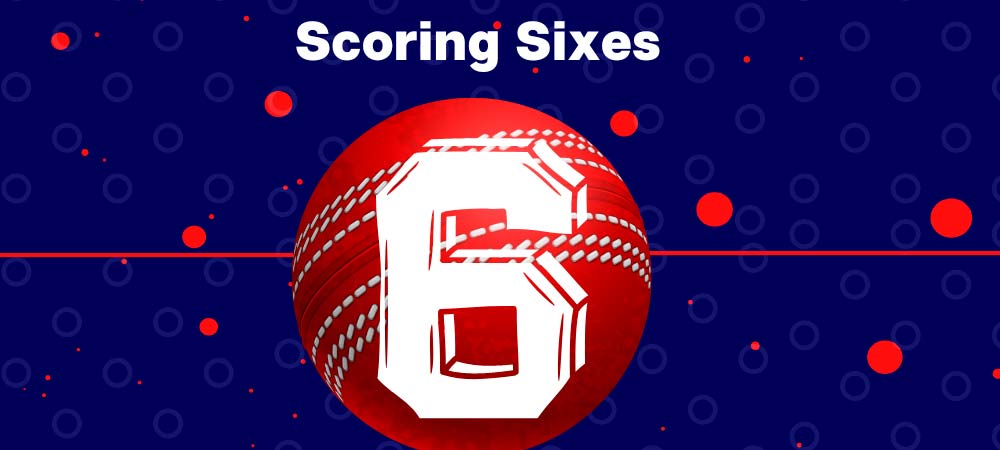क्रिकेट is a widely popular sport globally, and over 100 countries play cricket. Millions of people across the globe watch cricket on TV. The reason why it is popular is its thrilling gameplay and entertaining formats. Cricket is played in three different formats test matches, ODIs and the T-20s. The first cricket format in which cricket was played was test format. The ODI and T-20s formats were added in modern times to make cricket more exciting.
Cricket is a great source of entertainment; you can watch and play with your family and friends. The rules of this game are also relatively easy to understand. Two teams play cricket to make more runs than their opponents. You can score runs in sixes, fours, and by running between the wickets on the pitches. These are three different methods to score runs. If you are a beginner and want to understand the scoring system’s basic, then you will get all the knowledge below in brief.
Scoring Sixes

The most number of runs a batsman can score at a single time in a cricket match is six. It is scored when a batsman hits the ball hard enough over the boundaries line. The cricket has boundaries which is the maximum fielding area, and beyond which you get runs. So you hit the ball across the boundaries line, and the ball does not touch the ground a single time, you will be awarded six runs.
The six is the fastest way of scoring your runs. This can play a vital role in winning your team. Hitting six is not an easy job and requires strength and timing to hit it properly. The fans of cricket love to see sixes. That is why the player scoring more sixes becomes the favourite player of the cricket fans. There are some players who hit longest six in cricket history to show their dominance.
Top Longest Sixes Of Cricket
If you talk about the player from ancient times, then the longest six was hit by Albert Trott. He was the player of England, and he hit the six of over 160 meters. He hit that six in the year 1900s, which cleared the stadium. In the modern era, the longest six was hit by Shahid Afridi. He is a player from Pakistan and hit the six of about 158 meters in 2013. He was playing against West Indies when he hit that six out of the stadium. He is known for hitting sixes, and that is why he is also known as Boom Boom Afridi, a king of sixes.
These two players top the list of hitting longest sixes in cricket history.
Scoring Fours

Another way of scoring runs in cricket is four. The batsmen try to hit the ball hard to cross the boundary lines. The ball can touch the ground, but it has to touch the boundary lines to get four runs for the team. It is hard to score four runs as there fielder throughout the field to catch and stop the player from scoring runs. Thus the batsmen try to find the gap among the fielder standing to hit past them for four runs.
Hitting four requires skills and precision with the angle you hit the ball. The bat should not be held firm to absorb the power; instead, it should be tight to make it easy to hit four runs.
Scoring By Running On The Pitch
You can also score runs in cricket by running in the middle of the wicket. You can score only 1,2,3, 4 runs at most by running. The batsman tries to hit the ball as far as he can into the deep end of the field to have time to score more and more run by running. Both batsmen need to be fit and have the stamina to run more scores. The coordination among both players also matters as scoring runs by running means both batsmen to reach safe ends before the fielder throws the ball at them.
These are the three methods by which a batsman can score a run for his team. The cricket match also has a scorer who keeps track of the total runs scored by each team. This helps in fair counting of runs for both teams as a single run can matter at the end of the match. Also, the field umpire has the final authority over the decisions on the runs. This means you can argue or misbehave with the umpires if the decision is against you.
Cricket is a game that can be enjoyed by children and adults. It has got all for everyone, and you can play it as a leisure activity, or you can try to play it professionally.
What is the run rate?
Before knowing the methods and formula for run rate it is very important to know what run rate is. Run rate is basically running per over which means calculating an average of the run in an over. However, in an over there is a maximum of 36 run rates; beyond this, there cannot be any run rate.
In the run rate, there can be an error in the run rate because of the no-ball, wide ball, and more. Usually, the run rate is calculated to compare the run rate from the previous over to know if the team is playing better than the previous over or not. There are more such benefits of the run rate in cricket and it can be calculated very easily as well.
Now, the question is how would you know if the run rate is good or not? It is very easy for a test match; the run rate between 3.5 to 4 is considered a good run rate whereas for ODI 6 runs per over is considered to be the best run rate.
Talking about which country has secured the highest run rate till now, the answer is West Indies. West Indies have the highest strike rate. So, it can also be said that the run rate is recorded for various cricket teams.
How to calculate run rate
In order to calculate the run rate, there is a simple formula for it, by which anyone can calculate the run rate. It can be calculated by simply dividing the number of overs by the total number of runs scored by that time.
Suppose if the over is 20 by that time and the run scored is 100 then 100/20 which means the run rate will be 5. It is a very easy step to calculate the run rate. If you need to know when you can calculate it very easily. If you need to calculate the run rate for the ongoing undoubted equations needs to be changed a bit.

